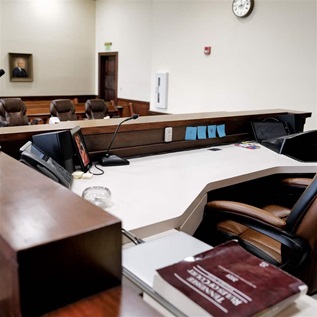The Franklin Institute's Benjamin Franklin National Memorial Re-Opens After Summer-Long Restoration
The Franklin, Pennsylvania's most-visited museum, will officially re-open its national monument, The Benjamin Franklin National Memorial, after a summer-long restoration that includes multi-media enhancements. Almost $1.5 million in federal funding from fiscal year 2008 was directed for memorial restoration from the National Park Service, Department of the Interior, as well as $1 million in funding from The Pew Charitable Trusts and $1 million from the City of Philadelphia's Cultural Corridors Fund. The announcement is part of The Franklin Institute's “Inspire Science!” strategic plan.
The Benjamin Franklin National Memorial, located at the heart of The Franklin, houses the dramatic thirty-ton white marble statue of Ben Franklin carved by sculptor James Earl Fraser. The memorial was completed in 1938, and in 1972 the U.S. Congress designated it the official national memorial to Franklin. It is one of the few national memorials under non-governmental ownership. Within this rotunda, a number of changes have been made. Philadelphia's most famous citizen is now featured in Benjamin Franklin Forever – an hourly 3½-minute multimedia presentation utilizing the entire rotunda space. Digital projection, theatrical lighting and audio effects are now incorporated into a program that introduces Benjamin Franklin as a curious tinkerer – and demonstrates his profound impact on the world as a premiere international citizen, statesman, civic leader and scientist. The refurbishment also involves improved acoustics, as well as a series of state-of-the-art LED lighting upgrades. The rotunda's oculus, which had been painted over, has been re-gilded, and now has an automatic shade installed over its top. The shade will close hourly as part of the Benjamin Franklin Forever show. Other details include all-new acoustic glass in the lunettes, moving lights, and an audio/PA system. Throughout the day, quotes from Ben Franklin will be projected onto the walls, and graphic panels highlighting Franklin's life and accomplishments will provide visitors with a still greater appreciation of this Founding Father.
“The Franklin is a private institution with an important public responsibility—to maintain the nation's official memorial to one of our most important Founding Fathers,” said Donald Kimelman, Managing Director of the Pew's Philadelphia Program. “This project more than fulfills that mission. The memorial rotunda has been beautifully restored, and the multimedia presentation will better acquaint thousands of visitors with Franklin's many accomplishments.”
"The restoration of the Benjamin Franklin National Memorial has been a great success," said Senator Specter, who helped to secure $1.5 million in federal funding for the project. "The renovation of the national landmark will ensure that generations to come can appreciate Franklin's significant contributions to our nation's founding and our scientific community."
“We are proud of this restoration, which incorporates state-of-the-art technology to create a respectful and inspiring tribute to Benjamin Franklin's legacy,” said Dr. Dennis Wint, President of The Franklin Institute. “As the memorial's caretaker, we are thrilled with the newly-illuminated beauty of the memorial, as well as the creation of new ways to experience this Philadelphia monument.”
As part of the refurbishment, The Franklin's main entryway leading into the rotunda, Jordan Hall, also received additional lighting enhancements, including illumination of its ornamental ceiling and restoration of its decorative chandelier and sconces. Throughout this project, The Franklin's staff worked in close consultation with the Pennsylvania Historical and Museum Commission's Bureau of Historic Preservation to ensure that all aspects of the restoration were historically sensitive and conservationally sound.
Background
The Franklin has doubled its attendance in the last five years. Upgraded facilities, which range from a re-built heart to a 5,000 square foot store to blockbuster exhibits like Titanic, BodyWorlds and Tut have generated unprecedented attention and audiences. To capitalize on the re-invigorated image of the museum, as well as leverage its core mission of inquiry, The Franklin recently introduced a new logo and an intriguing tagline “Curious?”, playing to public perceptions of The Franklin as a place for excitement, scientific education, adventure and just plain fun.
The Franklin Institute
Founded in honor of America's first scientist, Benjamin Franklin, The Franklin Institute is a renowned and innovative leader in the field of science and technology learning, as well as a dynamic center of activity. It is dedicated to creating a passion for science by offering new and exciting access to science and technology in ways that would dazzle and delight its namesake. For more information, please visit www.fi.edu.











